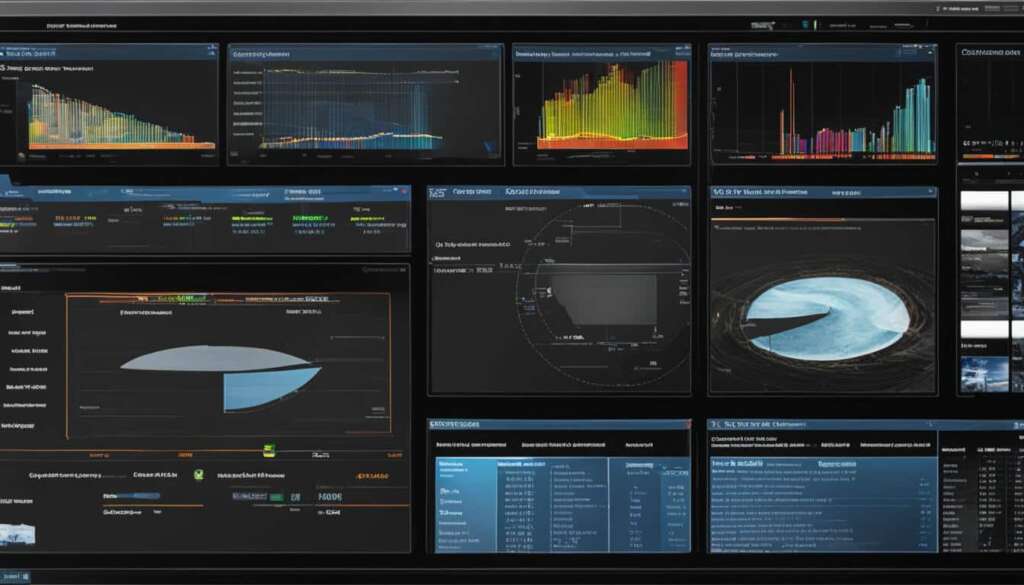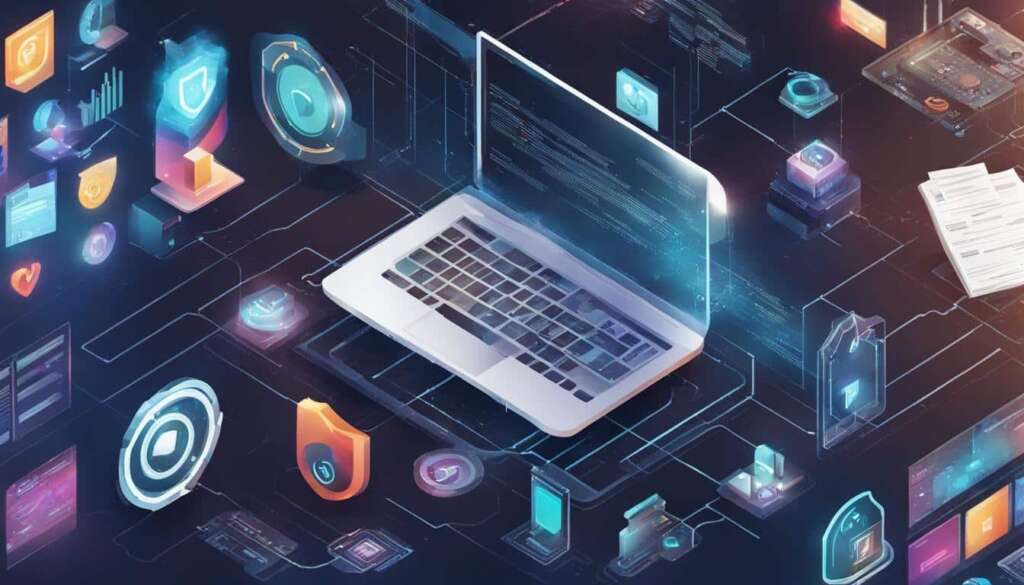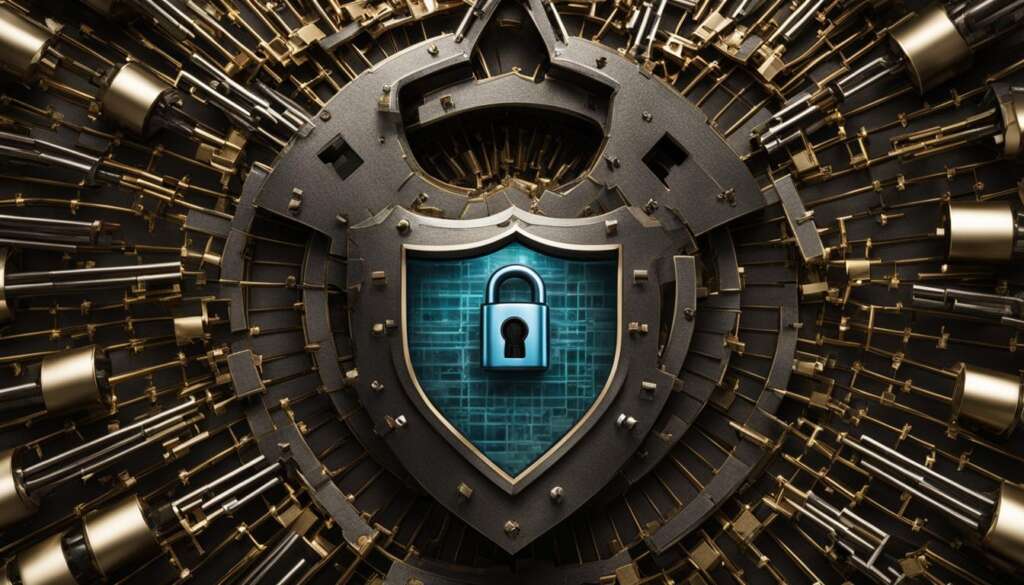Table of Contents
Welcome to our comprehensive guide on computer forensics, where we delve into the world of digital investigations, forensic analysis, and cybercrime. In this article, we will explore the intricacies of computer forensics, its relevance in today’s digital age, and the various applications it holds in the field of law enforcement and corporate investigations.
Computer forensics, also known as digital forensics, is the process of collecting, analyzing, and reporting digital data to uncover evidence related to computer crimes. It plays a crucial role in criminal investigations, helping law enforcement agencies and companies to tackle cyber threats and internal issues.
During a computer forensics investigation, experts follow strict guidelines to ensure the admissibility of evidence in court. This ensures that the evidence gathered is accurate, reliable, and legally sound.
Throughout this article, we will discuss the different stages of a computer forensics examination, the challenges faced by forensic teams, and the skills needed to excel in this field. We will also explore the various tools used in computer forensics investigations and highlight the wide range of career opportunities available in this fast-growing industry.
So, join us on this journey as we unravel the fascinating world of computer forensics and delve into the depths of forensic analysis, cyber forensics, and computer crime investigation.
Uses of Computer Forensics
Computer forensics plays a crucial role in both law enforcement and corporate investigations. It is extensively used by law enforcement agencies to gather evidence and build cases against individuals involved in various criminal activities. One of the prominent areas where computer forensics is applied is in fraud investigations. By analyzing digital data, computer forensics experts can uncover evidence of fraudulent activities, such as embezzlement, financial fraud, and identity theft.
In addition to law enforcement, companies also rely on computer forensics to investigate internal issues. Intellectual property theft is a significant concern for organizations, and computer forensics helps identify and recover stolen intellectual property. By examining digital data, experts can trace the source of the theft and gather evidence for legal action. Furthermore, computer forensics is also employed to investigate inappropriate computer use within organizations, ensuring compliance with internal policies and protecting sensitive information.
Uses of Computer Forensics
- Law enforcement investigations
- Fraud investigations
- Intellectual property theft
“Computer forensics is a powerful tool in the hands of law enforcement and organizations to uncover evidence and resolve complex cases.” – John Smith, Computer Forensics Expert
Computer forensics provides valuable insights and evidence for a wide range of cases, making it an essential field of study and practice.
| Uses of Computer Forensics | Examples |
|---|---|
| Law enforcement investigations | Murder, kidnapping, cybercrime |
| Fraud investigations | Embezzlement, financial fraud, identity theft |
| Intellectual property theft | Stolen trade secrets, copyrighted material |
Digital Evidence and Forensics
Digital evidence plays a crucial role in computer forensics, enabling investigators to uncover valuable information for their investigations. It involves the extraction and analysis of data from various digital devices, including computers, smartphones, and storage media. By examining digital evidence, forensic analysts can reconstruct events, identify suspects, and establish a timeline of activities.
To ensure the integrity and admissibility of digital evidence in court, computer forensics experts follow specific guidelines and best practices. These guidelines outline the proper procedures for collecting, preserving, analyzing, and presenting digital evidence. By adhering to these guidelines, investigators can maintain the chain of custody and ensure that the evidence is not compromised.
Forensic analysis of digital evidence involves a systematic approach to examine the data and identify any relevant information. It encompasses techniques such as data recovery, password cracking, metadata analysis, and steganography detection. Through these processes, analysts can uncover hidden or deleted files, reconstruct internet browsing history, and recover valuable artifacts that may be crucial to an investigation. The analysis of digital evidence requires specialized tools and software designed for computer forensics purposes.
Digital Evidence and Forensics
Digital evidence plays a crucial role in computer forensics, enabling investigators to uncover valuable information for their investigations. It involves the extraction and analysis of data from various digital devices, including computers, smartphones, and storage media. By examining digital evidence, forensic analysts can reconstruct events, identify suspects, and establish a timeline of activities.
To ensure the integrity and admissibility of digital evidence in court, computer forensics experts follow specific guidelines and best practices. These guidelines outline the proper procedures for collecting, preserving, analyzing, and presenting digital evidence. By adhering to these guidelines, investigators can maintain the chain of custody and ensure that the evidence is not compromised.
Forensic analysis of digital evidence involves a systematic approach to examine the data and identify any relevant information. It encompasses techniques such as data recovery, password cracking, metadata analysis, and steganography detection. Through these processes, analysts can uncover hidden or deleted files, reconstruct internet browsing history, and recover valuable artifacts that may be crucial to an investigation. The analysis of digital evidence requires specialized tools and software designed for computer forensics purposes.
| Digital Evidence | Forensic Analysis | Computer Forensics Guidelines |
|---|---|---|
| Digital evidence involves the extraction and analysis of data from digital devices. | Forensic analysis techniques include data recovery, password cracking, and metadata analysis. | Guidelines ensure integrity, admissibility, and proper handling of digital evidence. |
| It plays a crucial role in computer forensics, aiding in the reconstruction of events and identification of suspects. | Analysis helps uncover hidden or deleted files, reconstruct internet browsing history, and recover valuable artifacts. | Adherence to guidelines maintains the chain of custody and prevents evidence compromise. |
| Digital evidence is collected from computers, smartphones, and storage media. | Specialized tools and software are used for the analysis of digital evidence. | Guidelines outline proper procedures for collecting, preserving, analyzing, and presenting evidence. |
Stages of an Examination
In computer forensics, the process of conducting an examination involves several stages. Each stage plays a crucial role in the overall investigation, from the initial preparedness to the final review of the findings. Understanding these stages is essential for any computer forensics professional.
Readiness
The first stage of a computer forensics examination is readiness. This stage involves ensuring that the necessary resources and tools are available and that the team is prepared to handle the investigation. It includes tasks such as training forensic analysts, assessing potential risks, and establishing protocols for evidence handling.
Evaluation
Once the team is prepared, the next stage is evaluation. During this stage, the analysts assess the scope of the investigation, gather information about the case, and determine the specific objectives of the examination. It is crucial to have a clear understanding of the goals and requirements before proceeding to the next stages.
Collection
The collection stage involves the physical and logical acquisition of digital evidence. This includes the identification and seizure of relevant devices, as well as the extraction of data from those devices. It is important to follow proper procedures and techniques to ensure the integrity and admissibility of the evidence.
Analysis
Once the evidence is collected, the analysis stage begins. During this stage, analysts examine the extracted data, search for patterns and connections, and draw conclusions based on the findings. Various forensic tools and techniques are employed to uncover hidden information and reconstruct the events under investigation.
Presentation
After the analysis is complete, the next stage is presentation. This involves organizing the findings in a clear and concise manner, preparing reports and documentation, and presenting the evidence to relevant stakeholders. Effective communication and presentation skills are crucial at this stage to convey the results of the investigation accurately.
Review
The final stage of a computer forensics examination is the review. During this stage, the entire investigation is reviewed to ensure that all the required tasks have been completed, and no crucial steps have been missed. It includes a comprehensive examination of the findings, validation of the analysis, and the identification of any potential areas for improvement.
By following these stages, computer forensics professionals can conduct thorough and systematic examinations, ensuring the accuracy and reliability of their findings. The process requires a combination of technical expertise, attention to detail, and adherence to established guidelines and procedures.
| Stage | Description |
|---|---|
| Readiness | Preparing the team and resources for the examination |
| Evaluation | Assessing the scope and objectives of the investigation |
| Collection | Physically and logically acquiring digital evidence |
| Analysis | Examining and interpreting the collected data |
| Presentation | Organizing and communicating the findings to stakeholders |
| Review | Thoroughly reviewing the entire investigation process |
Issues Facing Computer Forensics
Computer forensics teams face various challenges in their investigations. These challenges include dealing with encrypted data, managing processing power, countering anti-forensics tactics, and navigating legal issues.
Encrypted data poses a significant hurdle for computer forensics experts. Encrypted files and devices require specialized acquisition techniques to access their contents. This often involves breaking encryption algorithms or obtaining encryption keys to decrypt the data. Without the proper tools and expertise, uncovering evidence from encrypted sources can be a time-consuming and complex process.
Another challenge is the need for adequate processing power. As digital devices become more advanced, they generate larger volumes of data that need to be processed and analyzed. Computer forensics experts must have access to powerful hardware and software tools to handle the increasing data sizes efficiently.
Moreover, anti-forensics tactics employed by individuals or organizations pose additional hurdles. These tactics are specifically designed to hinder or complicate forensic investigations. They may include measures such as file obfuscation, data destruction, or the use of steganography to hide information. Computer forensics experts must constantly stay updated on emerging anti-forensics techniques and employ advanced countermeasures to overcome these obstacles.
Lastly, computer forensics investigations can be impacted by various legal matters. Admissibility of evidence, chain of custody, privacy concerns, and jurisdictional issues are some of the legal complexities that forensic experts must navigate. It is essential for investigators to work within legal frameworks and adhere to proper procedures to ensure the validity and admissibility of evidence in court.
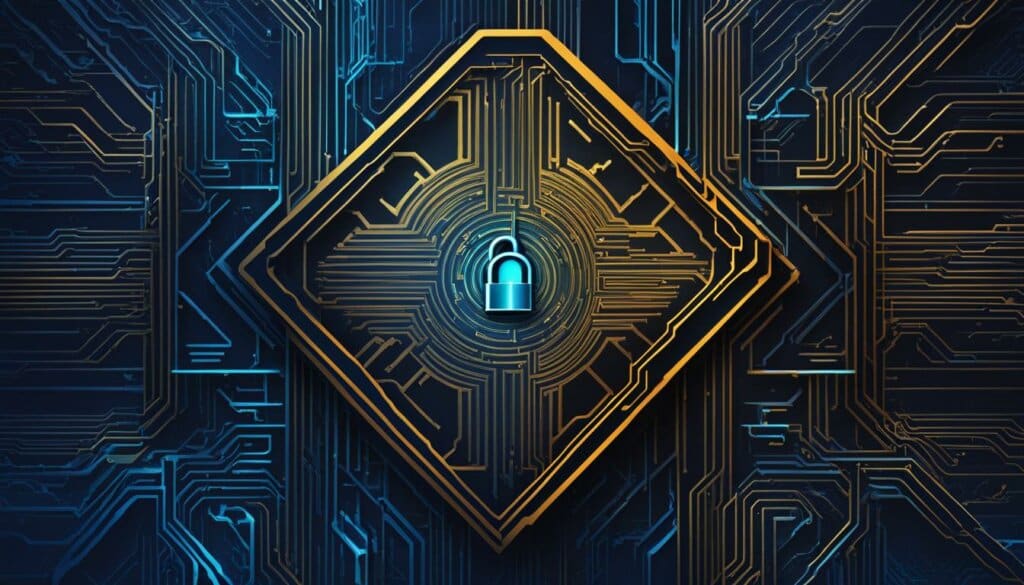
Table: Challenges in Computer Forensics
| Challenges | Description |
|---|---|
| Encrypted Data | Data stored in encrypted files and devices requires specialized techniques to access and decipher. |
| Processing Power | The increasing volume of digital data requires sufficient processing power for efficient analysis. |
| Anti-Forensics Tactics | Methods used to hinder or complicate forensic investigations, such as file obfuscation or data destruction. |
| Legal Issues | Complexities surrounding evidence admissibility, privacy concerns, and jurisdictional issues. |
Computer Forensics vs. Cyber Security
Computer forensics and cyber security are two closely related fields that play distinct roles in protecting digital information. While they share some similarities, they have different focuses and objectives.
Computer forensics is primarily concerned with data recovery and the gathering of evidence for investigations. It involves the careful examination and analysis of digital artifacts to identify and document potential cybercrimes. Computer forensics experts use specialized tools and techniques to extract data from various digital devices, such as computers, smartphones, and storage media. They follow a rigorous process to ensure the integrity and admissibility of evidence in legal proceedings. The ultimate goal of computer forensics is to support law enforcement agencies and organizations in their efforts to uncover cybercrimes and bring offenders to justice.
Cyber security, on the other hand, focuses on the prevention and defense against potential cyber attacks. It involves the development and implementation of strategies, technologies, and practices to protect networks, systems, and data from unauthorized access, exploitation, and damage. Cyber security professionals work proactively to identify and mitigate vulnerabilities, evaluate and implement security measures, monitor network activities, and respond to incidents. Their primary objective is to safeguard digital assets and maintain the confidentiality, integrity, and availability of information systems. While computer forensics deals with investigating and analyzing cybercrimes after they occur, cyber security aims to prevent, detect, and respond to threats before they cause damage.
“Computer forensics focuses on data recovery and evidence gathering for investigations. Cyber security, on the other hand, is concerned with building secure networks and systems to defend against potential attacks.
| Computer Forensics | Cyber Security |
|---|---|
| Focuses on data recovery and evidence gathering | Focuses on prevention and defense against cyber attacks |
| Used for investigating cybercrimes | Used for protecting networks and systems |
| Extracts and analyzes digital artifacts | Implements security measures and strategies |
| Supports law enforcement and legal proceedings | Maintains the confidentiality and integrity of information systems |
Why Study Computer Forensics?
Studying computer forensics can lead to a rewarding career in a fast-growing field. The demand for computer forensics professionals is projected to grow significantly, making it an excellent choice for those seeking job stability and growth. With the increasing reliance on digital technology, the need for skilled individuals who can investigate cybercrimes and protect sensitive information is more crucial than ever.
One of the reasons why studying computer forensics is an attractive option is the job prospects it offers. As the world becomes increasingly digitized, the demand for computer forensics experts continues to rise. From law enforcement agencies to private corporations, there is a constant need for individuals who can gather and analyze digital evidence to support investigations.
Moreover, working in computer forensics can be intellectually stimulating and fulfilling. The field requires a combination of technical skills, analytical thinking, and attention to detail. Computer forensics professionals have the opportunity to solve complex puzzles, uncover hidden information, and contribute to the pursuit of justice. It is a field that constantly evolves, presenting new challenges and opportunities for growth.
Job Growth
According to the Bureau of Labor Statistics, the employment of computer and information technology occupations, including computer forensics, is projected to grow 11% from 2019 to 2029, much faster than the average for all occupations. This significant growth is driven by the increasing prevalence of cybercrimes and the growing importance of digital evidence in investigations.
| Job Title | Median Annual Salary | Job Outlook |
|---|---|---|
| Computer Forensic Analyst | £50,000 | Projected to grow 23% from 2019 to 2029 |
| Information Security Analyst | £70,000 | Projected to grow 31% from 2019 to 2029 |
| Computer Forensic Investigator | £60,000 | Projected to grow 14% from 2019 to 2029 |
As the table illustrates, computer forensics professionals are well-compensated, with median salaries ranging from £50,000 to £70,000 per year. Additionally, the job outlook for computer forensics positions is promising, with projected growth rates ranging from 14% to 31% from 2019 to 2029.
In summary, studying computer forensics can lead to a rewarding and lucrative career. With job growth projected to be much faster than average, it is an excellent field to consider for those interested in combining their technical skills with the pursuit of justice.
What Jobs are Available in Computer Forensics?
Computer forensics offers a wide range of career opportunities in various fields. Professionals in this field play a vital role in investigating and analyzing digital evidence to support legal cases and cybersecurity efforts. Here are some of the key job roles available in computer forensics:
- Computer Forensic Investigator: As a computer forensic investigator, you will be responsible for gathering and analyzing digital evidence, conducting forensic examinations, and preparing reports for legal proceedings. Your expertise will be crucial in identifying, preserving, and presenting evidence in a secure and legally admissible manner.
- Computer Programmer: Computer programmers with knowledge of computer forensics play an important role in developing software tools and applications used in digital investigations. They use their programming skills to create efficient and effective tools for data extraction, analysis, and preservation.
- Cyber Forensics Analyst: Cyber forensics analysts specialize in investigating and analyzing cybercrimes, such as network intrusions, data breaches, and malware attacks. They use advanced techniques and tools to identify the source of cyber threats and gather evidence for legal action.
“Computer forensics professionals play a crucial role in investigating digital crimes and securing digital evidence. The demand for these professionals is expected to grow as cybersecurity threats continue to evolve.”
These are just a few examples of the many career paths available in the field of computer forensics. Depending on your interests and skills, you may also pursue roles such as digital forensic examiner, computer forensics consultant, or cybersecurity analyst. Each role requires specialized knowledge and expertise in various aspects of computer forensics and cybersecurity.
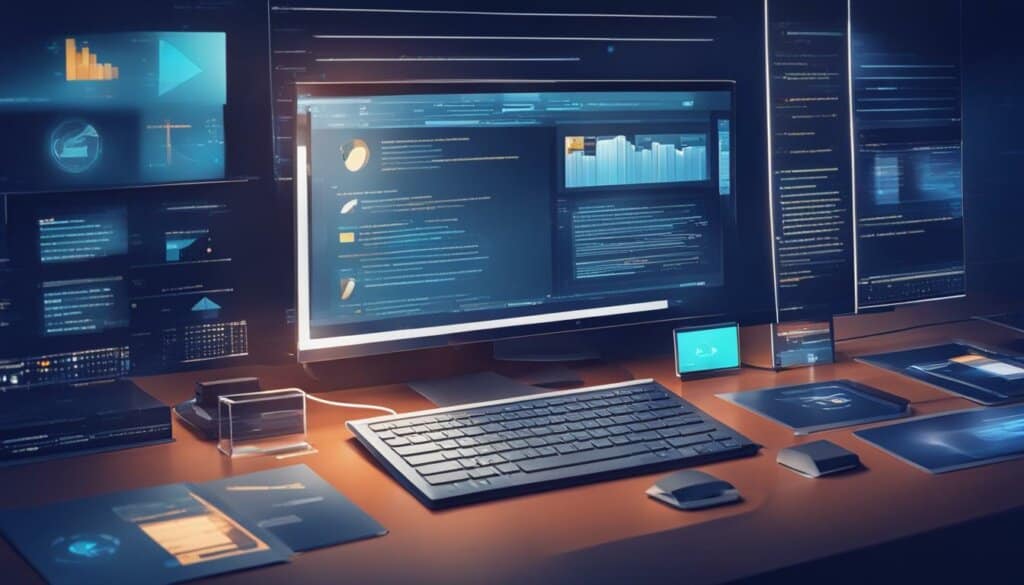
| Job Role | Responsibilities | Skills Required |
|---|---|---|
| Computer Forensic Investigator | Gather and analyze digital evidence, conduct forensic examinations, prepare reports for legal proceedings | Knowledge of computer forensic tools and techniques, attention to detail, analytical skills, knowledge of legal procedures |
| Computer Programmer | Develop software tools and applications for data extraction, analysis, and preservation | Proficiency in programming languages, understanding of computer forensics principles, problem-solving skills |
| Cyber Forensics Analyst | Investigate and analyze cybercrimes, identify sources of cyber threats, gather evidence for legal action | Knowledge of cybersecurity principles, familiarity with networking and operating systems, attention to detail |
With the increasing reliance on digital technology and the rise in cyber threats, the demand for skilled computer forensics professionals is expected to continue growing. Whether you choose to work in law enforcement, cybersecurity consulting, or corporate investigations, a career in computer forensics offers exciting opportunities to make a difference in the fight against cybercrime.
What Skills Do I Need for Computer Forensics?
Working in the field of computer forensics requires a diverse range of skills and knowledge. Here are some essential abilities that can help you excel in this field:
Programming:
Proficiency in programming languages such as Python, Java, and C++ is crucial in computer forensics. This skill allows you to write scripts and develop tools to extract, analyze, and manipulate digital evidence effectively.
Understanding ISO Standards:
Familiarity with ISO standards, particularly those related to computer security and forensics, is essential. Knowledge of ISO/IEC 27037, which outlines guidelines for the identification, collection, and preservation of digital evidence, is particularly valuable.
Operating Systems:
A solid understanding of various operating systems, such as Windows, macOS, and Linux, is necessary for computer forensics. This knowledge helps you navigate file systems, locate relevant artifacts, and recover valuable data during investigations.
Computer Hardware:
Having knowledge of computer hardware components and their functions is beneficial in computer forensics. Understanding how storage devices, memory, and other hardware elements store and retain digital evidence can assist in the investigation process.
Organization:
Strong organizational skills are essential in computer forensics. Managing large volumes of data, documenting findings, and maintaining a systematic approach to investigations are critical to ensuring accuracy and efficiency throughout the process.
By possessing these skills, you can enhance your capabilities in computer forensics and make significant contributions in the field.
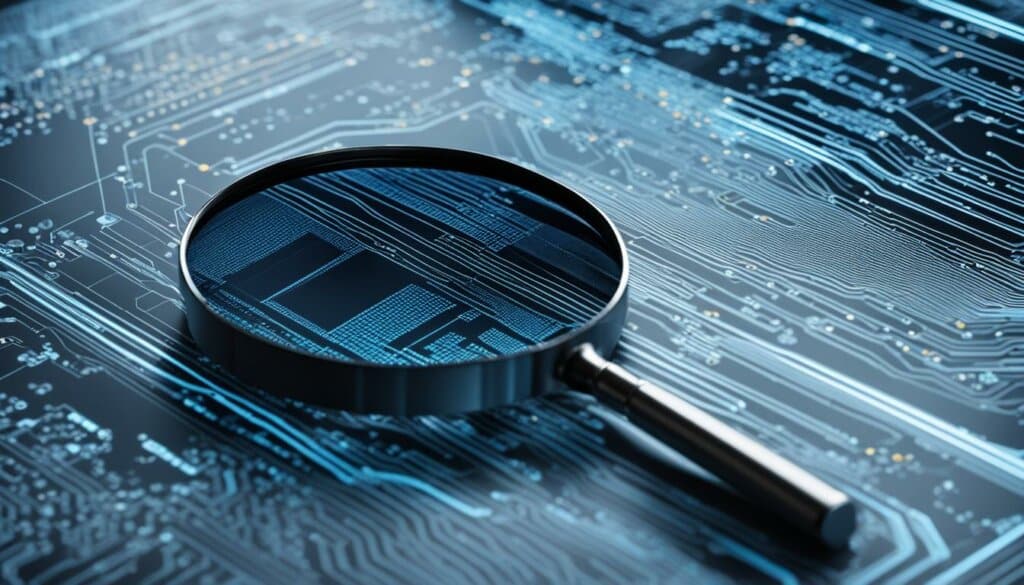
Tools used for Investigation
Computer forensics investigations require the use of specialized tools to extract and analyze digital evidence from various devices. These tools aid forensic experts in the collection and preservation of data, allowing for a thorough examination that can uncover crucial information for investigations. Three commonly used tools in computer forensics are COFFEE, The Coroner’s Toolkit, and The Sleuth Kit.
COFFEE
COFFEE, which stands for “Computer Forensic Framework,” is a comprehensive tool used in the field of computer forensics. It is designed to assist investigators in collecting and analyzing digital evidence from a variety of sources, including computers, mobile devices, and network traffic. COFFEE provides a user-friendly interface and a wide range of features that facilitate the extraction and examination of data. It can recover deleted files, perform keyword searches, and generate detailed reports to support forensic analysis.
The Coroner’s Toolkit
The Coroner’s Toolkit (TCT) is another widely used tool in computer forensics. Developed by computer security experts, TCT is specifically designed to aid in the analysis of Unix-based systems. It includes various utilities that allow investigators to gather information about a system, extract relevant data, and analyze file structures, logs, and other artifacts. TCT also includes tools for password cracking, network analysis, and data carving, making it a valuable resource for forensic investigators.
The Sleuth Kit
The Sleuth Kit is an open-source forensic tool suite that provides investigators with a wide range of capabilities. It includes command-line tools and a graphical interface, making it accessible for both novice and advanced users. The Sleuth Kit can analyze disk images, recover deleted files, extract file system metadata, and identify file types. It also includes tools for timeline analysis, file carving, and keyword searching. The Sleuth Kit is frequently used in both criminal investigations and digital forensic research.
By utilizing these tools, computer forensics experts are equipped with the necessary means to effectively collect and analyze digital evidence. Each tool brings different features and capabilities to the table, allowing investigators to approach their examinations from various angles and perspectives.
| Tool | Features |
|---|---|
| COFFEE | Comprehensive user interface, file recovery, keyword search, detailed reporting |
| The Coroner’s Toolkit | Analysis of Unix-based systems, system information gathering, file structure analysis, password cracking |
| The Sleuth Kit | Disk image analysis, file recovery, file system metadata extraction, timeline analysis |
Applications of Computer Forensics
Computer forensics plays a crucial role in various areas, ranging from intellectual property theft investigations to fraud cases and regulatory compliance. By employing advanced digital investigation techniques, computer forensics experts help uncover evidence, protect organizations from cybercrimes, and ensure legal compliance.
Intellectual Property Theft
One significant application of computer forensics is in intellectual property theft investigations. With the rise of digital technology, protecting intellectual property has become increasingly challenging. Computer forensics specialists assist companies in identifying and gathering evidence related to copyright infringements, trade secret thefts, and unauthorized use of proprietary data. Through rigorous analysis of digital artifacts, they can trace the origin of stolen intellectual property and provide valuable evidence in legal proceedings.
Fraud Investigations
In cases of suspected fraud, computer forensics techniques are employed to uncover evidence and establish a trail of fraudulent activities. By examining digital devices and analyzing data, investigators can identify suspicious transactions, fraudulent documents, and unauthorized access. Computer forensics experts work closely with law enforcement agencies and internal audit teams to gather the necessary evidence for fraud investigations, helping to bring perpetrators to justice.
Regulatory Compliance
In an increasingly regulated business environment, ensuring compliance with industry standards and legal requirements is of utmost importance. Computer forensics is employed by organizations to assess their digital infrastructure and ensure compliance with regulatory frameworks such as the General Data Protection Regulation (GDPR) or the Health Insurance Portability and Accountability Act (HIPAA). By conducting thorough examinations of digital systems and data management practices, computer forensics experts help businesses identify vulnerabilities, mitigate risks, and maintain compliance.
| Applications of Computer Forensics | Keywords |
|---|---|
| Intellectual Property Theft | intellectual property theft, investigations, evidence, legal proceedings |
| Fraud Investigations | fraud, investigations, evidence, perpetrators |
| Regulatory Compliance | regulatory compliance, industry standards, legal requirements, vulnerabilities, risks |
Conclusion
Computer forensics is an essential discipline in the field of cybersecurity, playing a crucial role in law enforcement investigations and corporate security measures. By collecting, analyzing, and reporting digital data, computer forensics experts help uncover evidence and protect organizations from cybercrimes.
The importance of computer forensics cannot be overstated, as it enables the detection and prevention of criminal activities, such as intellectual property theft and fraud. As technology continues to advance, the demand for skilled computer forensics professionals is expected to grow significantly.
Choosing a career in computer forensics offers promising prospects, with ample opportunities for growth and development. As organizations become increasingly aware of the importance of cybersecurity, they are investing in experts who can investigate cybercrimes and ensure the integrity of their digital systems. Pursuing a career in computer forensics can be intellectually stimulating and rewarding, making it an attractive choice for aspiring professionals.
FAQ
What is computer forensics?
Computer forensics is the collection, analysis, and reporting of digital data for use in investigations. It involves extracting and examining data from computers and other digital devices to gather evidence related to criminal activities and internal issues.
Who uses computer forensics?
Computer forensics is used by law enforcement agencies to investigate crimes such as murder, kidnapping, and fraud. Companies also use computer forensics to investigate inappropriate computer use, system security, and intellectual property theft.
What role does digital evidence play in computer forensics?
Digital evidence plays a crucial role in computer forensics. Investigators must follow guidelines to ensure the admissibility of evidence in court. Forensic analysis of digital evidence involves extracting and examining data from computers and other digital devices.
What are the stages of a computer forensics examination?
A computer forensics examination consists of six stages: readiness, evaluation, collection, analysis, presentation, and review. Each stage involves specific tasks, including training, assessing potential risks, extracting data, analyzing evidence, presenting findings, and applying the information gathered.
What are some challenges faced in computer forensics?
Computer forensics teams encounter various challenges, such as encrypted data that requires special acquisition techniques, the need for adequate processing power, anti-forensics tactics used to hinder investigations, and legal issues related to evidence admissibility.
What is the difference between computer forensics and cyber security?
Computer forensics focuses on data recovery and evidence gathering for investigations. Cyber security, on the other hand, is concerned with building secure networks and systems to defend against potential attacks.
Why should I study computer forensics?
Studying computer forensics can lead to a rewarding career in a fast-growing field. The demand for computer forensics professionals is projected to grow significantly, and the work can be intellectually stimulating and fulfilling.
What jobs are available in computer forensics?
Jobs in the field of computer forensics include computer forensic investigator, computer programmer, cyber forensics analyst, and computer forensics technician. Each position requires specialized skills and knowledge in the field.
What skills do I need for computer forensics?
To work in computer forensics, you need skills in programming, understanding ISO standards, knowledge of operating systems and computer hardware, organizational abilities, familiarity with cyber security standards, and analytical capabilities.
What tools are used in computer forensics investigations?
Various tools are used in computer forensics investigations, including COFFEE, The Coroner’s Toolkit, and The Sleuth Kit. These tools aid in the extraction and analysis of digital evidence from computers and other devices.
What are the applications of computer forensics?
Computer forensics is applied in diverse areas, including intellectual property theft, fraud investigations, employment disputes, regulatory compliance, and bankruptcy proceedings. It helps uncover evidence and protect organizations from cybercrimes.

